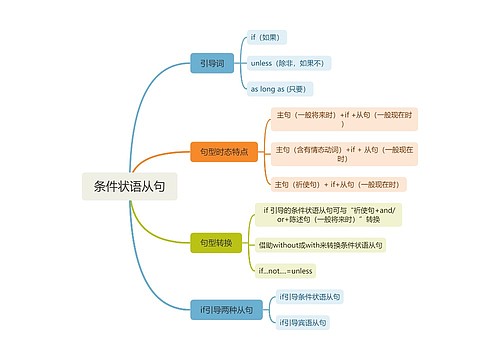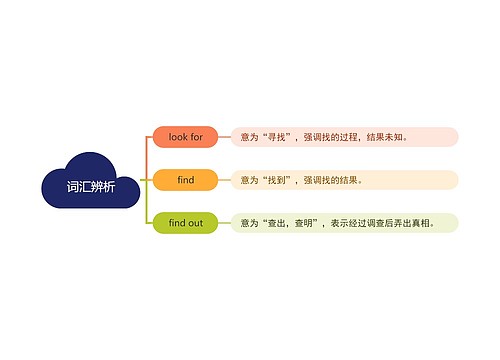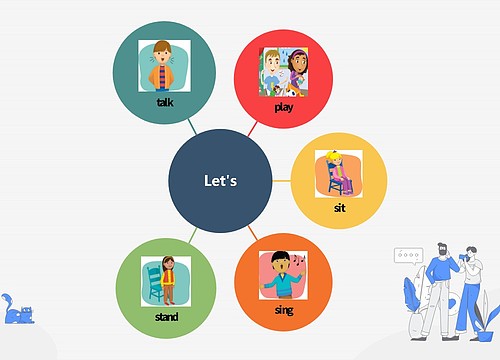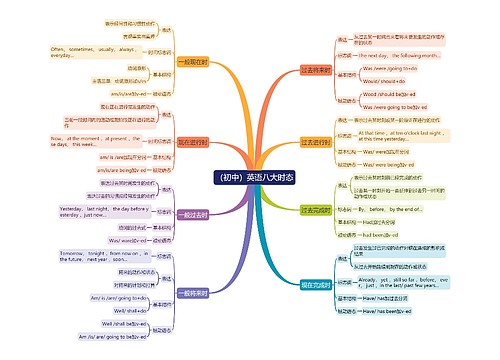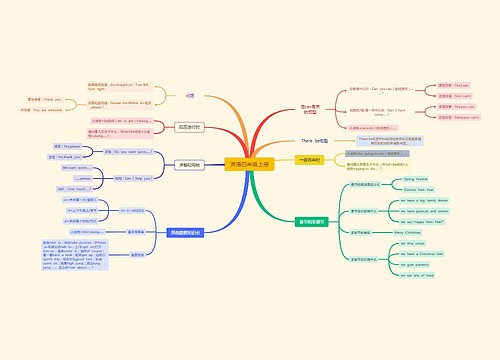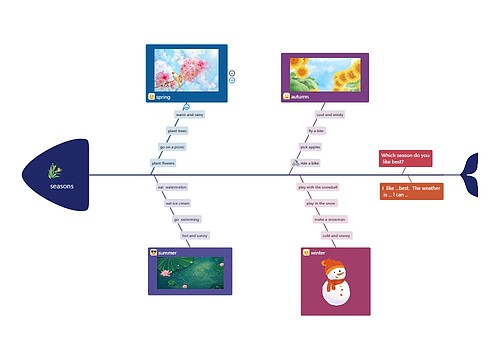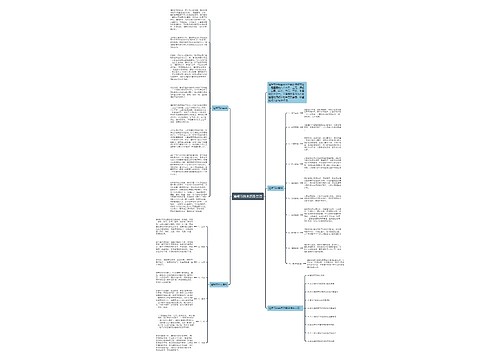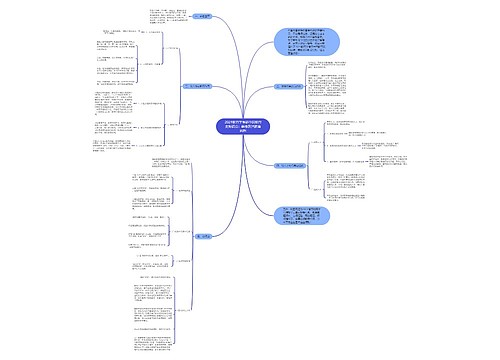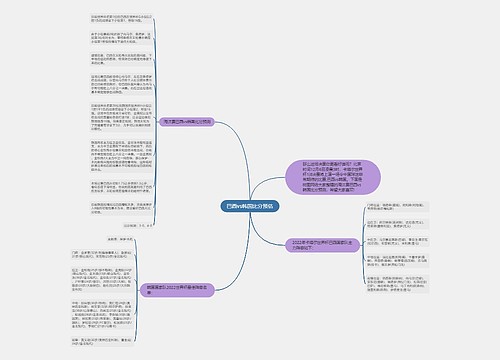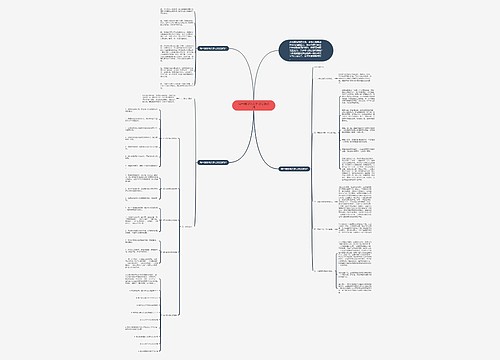
5篇高中英语话题作文教案思维导图
此生来迟
2023-04-04

高中英语话题作文教案
英语话题作文教案
编写教案的繁简,一般是有经验的教师写得简略些,而新教师写得详细些。
树图思维导图提供《5篇高中英语话题作文教案》在线思维导图免费制作,点击“编辑”按钮,可对《5篇高中英语话题作文教案》进行在线思维导图编辑,本思维导图属于思维导图模板主题,文件编号是:b0ad2eef656033d9795fee1c6dfdd9a0
思维导图大纲
相关思维导图模版
5篇高中英语话题作文教案思维导图模板大纲
编写教案的繁简,一般是有经验的教师写得简略些,而新教师写得详细些。原定教案,在上课进程中可根据具体情况做适当的必要的调整,课后随时记录教学效果,进行简要的自我分析,有助于积累教学经验,不断提高教学质量。以下是树图网带来的高中英语话题作文教案内容,感谢您的阅读,希望能帮助到您!
高中英语话题作文教案1
一、主语
主语是句子陈述的对象,说明是谁或什么。表示句子说的是"什么人"、"什么事"、"什么东西"、"什么地方"等等。
名词、代词、数词、动名词、To do不定式、一个句子 都可以做主语。
二、谓语
谓语是对主语动作或状态的陈述或说明,指出"做什么"、"是什么"或"怎么样". 谓语动词的位置一般在主语之后。
三、宾语
宾语,又称受词,是指一个动作(动词)的接受者。宾语分为直接宾语和间接宾语(间接宾语也称宾语补足语)两大类,其中直接宾语指动作的直接对象,间接宾语说明动作的非直接,但受动作影响的对象。一般而言,及物动词后面最少要有一个宾语,而该宾语通常为直接宾语,有些及物动词要求两个宾语,则这两个宾语通常一个为直接宾语,另一个为间接宾语。名词、代词、数词、动名词、To do不定式、一个句子 都可以做宾语,而to do不定式用于宾语补足语。
四、定语
定语是用来修饰、限定、说明名词或代词的品质与特征的。 主要有形容词此外还有名词、代词、数词、介词短语、动词不定式(短语)、分词、定语从句或相当于形容词的词、短语或句子都可以作定语。 汉语中常用„……的‟表示。定语和中心语之间是修饰和被修饰、限制和被限制的关系。在汉语中,中心语与定语二者之间有的需要用结构助词"的",有的不需要,有的可要可不要。 "的"是定语的标志。
高中英语话题作文教案2
it的概念:
it可用作人称代词、指示代词、先行词及引导词等。
it 的用法:
1、it可指天气、温度、时间、距离等 。
如:It is cold today, isn't it?
2、用作人称代词,代替前文提到过的事物。
如:The dog is not acold-blooded animals. It doesn't need to hibernate.
3、为避免重复,it可用来代替前面说过的短语或句子。
如:I tried to persuade my father to give up smoking, but found it impossible. (it=to persuade my father to give up smoking)
4、代替指示代词this,that。
如:—What's this?
—It's an album.
—Whose new bike is that?
—It's Mary's.
注:it与one,that的区别:
it=the(this, that)+名词,特指并且代替前面所提到的某特定事物。
如:He's bought a new car, so he drives it everywhere to show ito ff.
one=a+名词,one指前面提到的同类事物中的不同的另一个。
如:He needs a computer, but he can't afford one.
that=the+名词,that指代的名词与前面的名词属于同一类,但不属同一个。
如:The population of China is larger than that of Japan. that指代population,但其后有一个of短语作定语,以区别于the population of China。
注:it与that的异同:
it指同一事物,that指同类但并不是同一事物。
如:I like the climate of Kunming more than that of Beijing.
The climate of Kunming is mild, and I like it.
5、It/This/That+be+the first(second, third...) time+that-clause 这个句型表示截止到说话时为止的某人的一种经历,关键是注意time前有序数词,主句是一般现在时is时,从句要用现在完成时;如果主句用一般过去时was时,则从句须相应地用过去完成时。
如:This is the first time(that) these Europeans have visited the Great Wall.
It was the fifth time(that) I had paid a friendly visit to America.
6、在一些相对固定的词组中,没有特殊含义,经常不翻译。
如:He's never really made it as an actor. 作为演员,他从未获得过真正的成功。
It is my turn. 轮到我了。
强调句中的it:
可以用来改变句子结构,使句子的某一成分得到强调:
1)强调句的基本句型it's/was+被强调成分+that/who+其他成分
原句:I told Jim the news in our office yesterday.
强调主语:It was I that/who told Jim the news in our office yesterday.
强调宾语:It was Jim that I told the news in our office yesterday.
或:It was the news that I told Jim in our office yesterday.
强调地点状语:It was in our office that I told Jim the news yesterday.
强调时间状语:It was yesterday that I told Jim the news in our office.
2)强调句的一般疑问句型Is/Was+it+所强调部分+that/who...?
如:Was it you that told Jim the news in your office yesterday?
3)强调句的特殊疑问句型疑问词+is/was+it+that/who...?
如:Who was it that told Jim the news in your office yesterday?
【注】强调句与主语从句虽然在形式上很相似,即都含有it is(was)...that。但,区别在于:强调句去掉it is(was)…that之后,句子结构仍然完整,而主语从句却不能这样。
如:(It is)our hope(that) the two sides will work towards peace.
解析:去掉It is…that之后,句子是不成立的。由此得出该句不是强调句,而是一个简单的主语从句,it是形式主语,从句是真正的主语。
高中英语话题作文教案3
1)quality
表示"品质,品种"时,可有复数形式。
of quality修饰人,表示"品质好的"。
说明商品时,为不可数名词,表示"质量";作名词复数时,表示"性能,种类"。
2)willing
表示"乐意的,愿意的",作表语时,后接不定式或者是that引导的从句,从句中用should+动词原形,should可以省略。
有时willing可以用在seem,look,sound等系动词后面。
作定语时,表示"积极的,肯干的,自愿的,意志坚强的"。
3)fight
fight against… 为……反对而斗争,和……作战 fight with和……作战或者斗争,与……并肩作战 fight for
为……斗争或者奋斗 fight over 为……争吵 fight(it)out 通过斗争解决,打出个胜负
4)advise
advise sb to do sth 劝告/建议某人去做某事 advise sb not to do sth=advise sb against
doing sth 劝告/建议某人不要去做某事
advise后接一个宾语从句,从句中的动词要用虚拟语气,即should+动词原形,should可以省略。
advise sb of sth 把某事通知某人
advise sb on/about sth 和某人商量某事
5)youth
表示"青年男子,青年小伙子"时,是可数名词,常含贬义。
the youth 青年人的总称,作主语是,谓语动词可是复数也可是单数。
表示"青春,青少年时期"是不可数名词。
6)vote
作名词,表示"选举,投票,表决"时,前面常加不定冠词。
bring/put/submit sth to a/the vote 将某问题交付表决(表主动)come/go to a/the vote
(某问题)被交付表决(表被动)
表示"选票,选举人"时,是可数名词。
表示"选举权"时,前面常加a,the,one’s等限制词。
vote for 投票赞成,建议 vote against 投票反对 vote on 对……表决 vote to do 一致决定
7)position
表示"位置,姿势,职位,立场"时,是可数名词,常加in。
表示"地位"时,是不可数名词,有时可加不定冠词。
in a position to do sth处于能够做某事的地位 in/out of position 在(不在)适当位置
take up the position that… 主张……
8)accept
表示"同意,接受"时,后接名词,代词或者that引导的从句。
accept还可以接不定式。
9)equal
作形容词,与to连用,后接名词或者动名词,表示"能胜任的,能应付的"。
作动词,后接in,表示"在某方面比得上或者敌得过",多用于一般时。
10)degree
表示"程度,等级,学位,度数"。
by degrees 渐渐地 to a degree非常;有点,稍微
do/study for degree 攻读学位 take/get/receive/earn one’s degree获得学位
11)guard
作名词,表示"守望,警戒"。既可以作个体名词,表示"警卫,卫兵,哨兵";表示"卫队,警卫队,仪仗队"也可以作集体名词。
keep/stand/mount guard over… 守卫…… be on guard against 提防,谨慎 off one’s duard
失去警惕
作动词表示"保护,防止,看守,警惕",常与against或者from搭配。
12)fear
作名词,表示"恐惧,顾虑或者担心的事情,可能性"。
for fear of/that 唯恐,以免 of后接名词,动名词;that后接从句。
作动词,表示"害怕,畏惧,恐怕"。后接名词,动名词,不定式或者从句。
fear for 担心
13)reward
作动词,表示"报酬,酬谢,报答,奖赏"。接介词for表示"缘故"。接介词with表示奖赏的东西。
作名词,表示"报酬,酬谢,报答,奖赏"。
as a reward for 作为……奖赏,为酬谢…… in reward of (以……)酬谢
in reward 作为报酬
表示好处,回报时,常常用作复数。
14)sentence
作动词,sentence sb 判决某人,后接介词to+名词,也可以接不定式。
15)trouble
作名词,既可以是可数名词也可以是不可数名词。
in trouble 处于困境 no trouble 不麻烦,不费事 ask for/look for/borrow trouble
自讨苦吃,自找麻烦
be a trouble to sb 对某人来说是个麻烦 be a trouble to do sth 干某事时间麻烦事
have trouble doing/to do sth 做某事很费力 make trouble 制造麻烦
get into trouble 陷入困境 get out of trouble 摆脱困境
give sb trouble/put sb to trouble 给某人添麻烦 trouble to do 多用于否定句或者是疑问句
16)set up
表示"建立,开创;竖起;创纪录"。
set(oneself)up as 开始当…… set out 动身,出发;开始 set about 开始;着手 set off 动身;使爆炸 set
down 记下来,写下来
17)blow up①爆炸,炸毁②吹胀③训斥批评
blow away 枪杀,彻底战胜 blow in 不期而至 blow out 吹灭 blow off 不重视 blow over刮倒
18)lose heart
lose one’s heart to… 爱上 break one’s heart 伤心 from the bottom of one’s heart
从内心里
put one’s heart into 全心全意
19)倒装结构的用法:
一、副词here,there, in, out,up ,down, away,back,now, then, ahead
等位于句首,当谓语动词是be,come, go, follow,run等表示位置移动的动词,而且主语又是名词时,需要把谓语动词放主语之前,即全部倒装。
注意:A 此类倒装不用进行时态度。B若主语是代词时,不用倒装。
二、含有否定意义的词放句首,部分倒装。
A具有否定意义的副词放句首: not,never,seldom,hardly, rarely.little,scarely,few…
B,含有否定意义的连词放句首:not only…but also.., neither..nor.., no sooner…than..,
scarely..than..,Hardly..when.., not until…
-not only, no sooner,hardly.scarely要倒,but (also), than, when后面的句子不倒.
neither..nor..两部分都倒装。
C, 含有否定意义的介词放句首:by no means, In no time,in no case, on no account,under no
circumstances…
三、only+状语,部分到装
四、表示上文的状况也适合另外一人或事半功倍有下列:
肯定:so+助动词(动/情态)+主语 -主语与上文一致
否定:neither(nor)+助动(动/情态)+主语
五、as 作"尽管/虽然",引导让步状语从句,由于语法需要,把表语/状语/动词提于句首。
六、so ..that.., such ..that..的句子结构中,若so,such 和与其所修饰的词置于句首,实行部分倒。
七、若if 引导的虚拟条件句中有were, had, should 时, 可将if省,把were, had , should 放主语之前。
八、充当地点状语的介词短语放句首,全倒。
九、在表示愿望的感叹句,倒装。
高中英语话题作文教案4
1. because of 因为…… (注意和because 的区别)
2. even if (= even thoug)即使,用来引导让步状语从句
3. come up 走上前来,走近,发生,出现 come up with 追上,赶上,提出
4. communicate with sb 和某人交流
5. be different from… 与……不同
be different in … 在……方面不同
Most of my projects are different in performance.
我多数作品的演奏风格都不同。
6. be based on 以……为基础
7. at present 目前,眼下 for the present眼前;暂时
8. make (good/better/fulll)use of
9. the latter后者 the former 前者
10. a large number of 大量的 the number of …的数量
11. such as 例如
12. hold on 坚持住,握住不放;(打电话时)等—会
13. … you will hear the difference in the way(that/ in which) people speak.
你会听出人们在说话时的差异。
14. play a role/ part (in) 在…中担任角色;在…中起作用;扮演一个角色
15. the same …as… 与……一样
16. at the top of…在…顶上
at the bottom of 在……底部
17. bring up 教养,养育;提出
18. request sb (not) to do sth. 要求某人做/不要做某事
19. be satisfied with…对……感到满意,满足于
20. suggest v. (request,insist…)
I suggested you do what he says. 我建议你按照他说的去做。
I suggest you not go tomorrow. 我想你明天还是不要去了。
His pale face suggested that he was in bad health. 他苍白的脸色暗示了他身体不好。
注意:insist 意思为"坚持要求"时后面的that从句用虚拟语气;如果insist 意为"强调,坚持认为"的时候,从句可以用任何所需要的时态。例如:She insisted that she didn’t tell a lie.她坚持认为她没撒谎。
21. according to…. 按照… 根据…
高中英语话题作文教案5
介词in, on, under等+名词构成介词短语表被动意义
表示方位的介词与含动作意义的名词合用,含被动之义,其意义相当于该名词相应动词的被动形式,名词前一般不用冠词。
1. "under +名词"结构,表示"某事在进行中"。常见的有:under control(受控制), under treatment(在治疗中), under repair(在修理中), under discussion(在讨论中), under construction(在施工中)。
例The building is under construction(is being constructed).
2."beyond+名词"结构,"出乎……胜过……、范围、限度"。
常见的有:beyond belief (令人难以置信), beyond one’s reach(鞭长莫及),beyond one’s control(无法控制),beyond our hope. 我们的成功始料不及。
例The rumour is beyond belief(=can’t be believed).
3."above+名词"结构,表示"(品质、行为、能力等) 超过……、高于……"。
例His honest character is above all praise.=His honest character cannot be praised enough.
4."for+名词"结构,表示 "适于……、 为着……"。如:for sale(出售), for rent(出租)等。
例That hou
se is for sale. (= That house is to be sold).
5."in+名词"结构 ,表示"在……过程中或范围内"常见的有:in print(在印刷中),in sight(在视野范围内),等。
例The book is not yet in print.(=is not yet printed)
6."on+名词"结构, 表示"在从事…… 中"。常见的有:on sale(出售),on show(展出), on trial(受审)。
例Today some treasures are on show in the museum (= are being showed).
7."out of+名词"结构 ; 表示 "超出…… 之外",常见的有:out of control (控制不了),out of sight (超出视线之外),out of one’s reach(够不着), out of fashion(不流行)等。
例 The plane was out of control (can’t be controlled).
5篇高中英语话题作文教案相关文章:
★ 高中英语话题作文习作大全
★ 中学生英语话题作文300字
★ 英语教学反思案例5篇
★ 中学生以端午节为话题的优秀英语作文5篇 - 5068儿童网
★ 《Unit5Themeparks》教案高中必修4英语
★ 英语教学反思案例5篇2021年
★ 中学生以春节为话题的高分英语作文5篇
★ 以元旦节为话题的中学生优秀英语作文5篇
★ 《Unit1WomenofAchievement教案》高中必修4英语
★ 中学生以圣诞节为话题的满分英语作文5篇
查看更多
10.15-付费推广 ·(十一)· 全站配合搜索节奏解析与引力魔方数据优化思维导图
 U249128194
U249128194树图思维导图提供《10.15-付费推广 ·(十一)· 全站配合搜索节奏解析与引力魔方数据优化》在线思维导图免费制作,点击“编辑”按钮,可对《10.15-付费推广 ·(十一)· 全站配合搜索节奏解析与引力魔方数据优化》进行在线思维导图编辑,本思维导图属于思维导图模板主题,文件编号是:ca82ce4ec961ffd61f0a484a5c579820
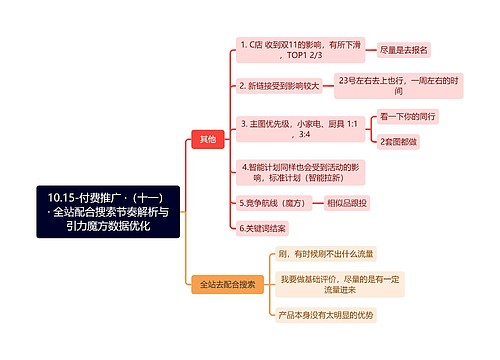
5组成长计划思维导图
 U529985218
U529985218树图思维导图提供《5组成长计划》在线思维导图免费制作,点击“编辑”按钮,可对《5组成长计划》进行在线思维导图编辑,本思维导图属于思维导图模板主题,文件编号是:567eeaf1834765b5fd51195a76080718
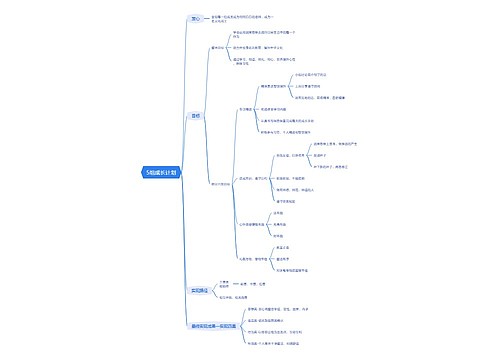
相似思维导图模版
首页
我的文件
我的团队
个人中心
